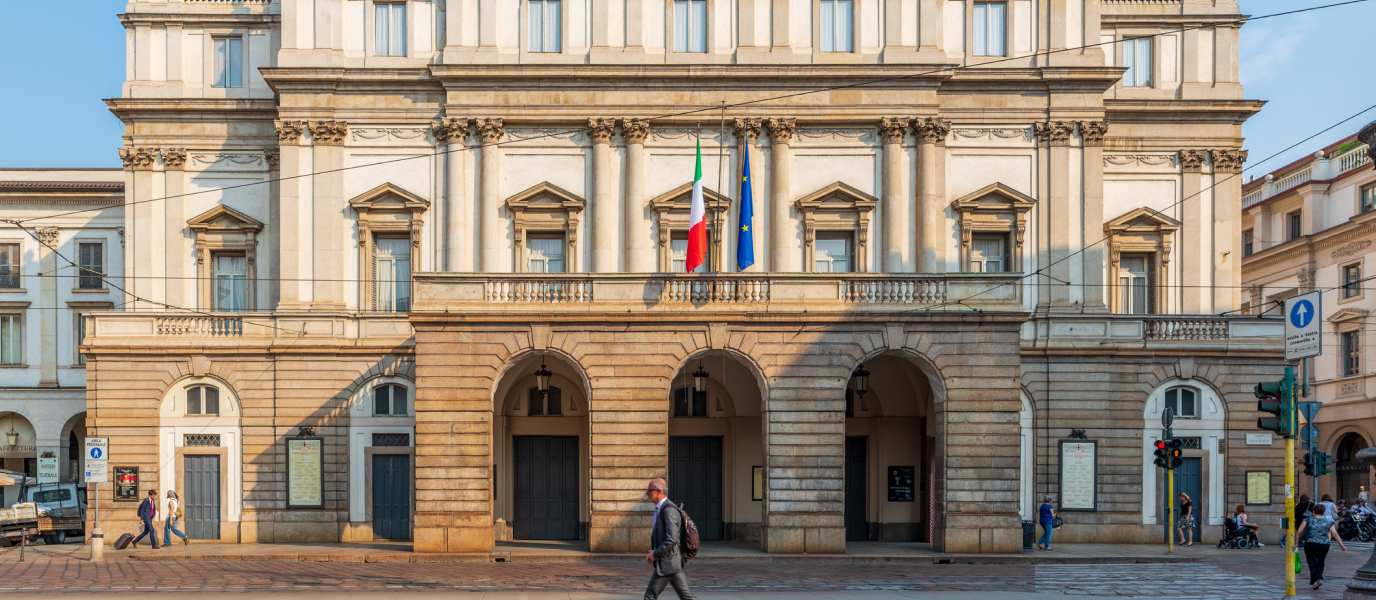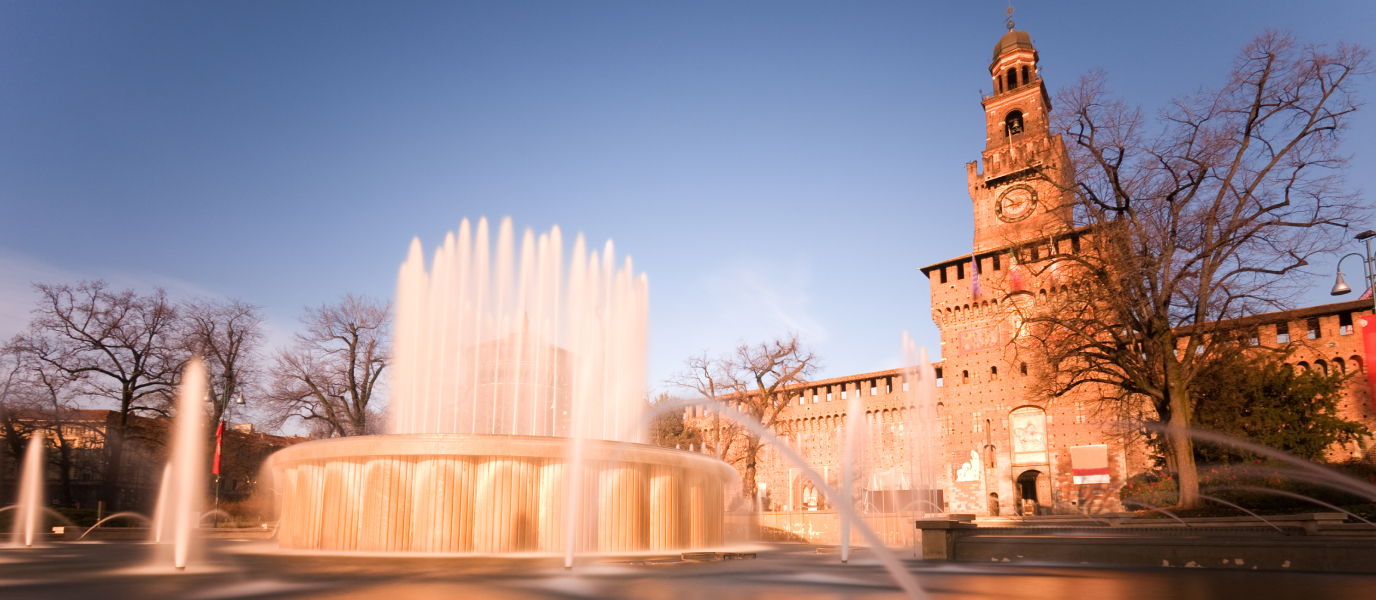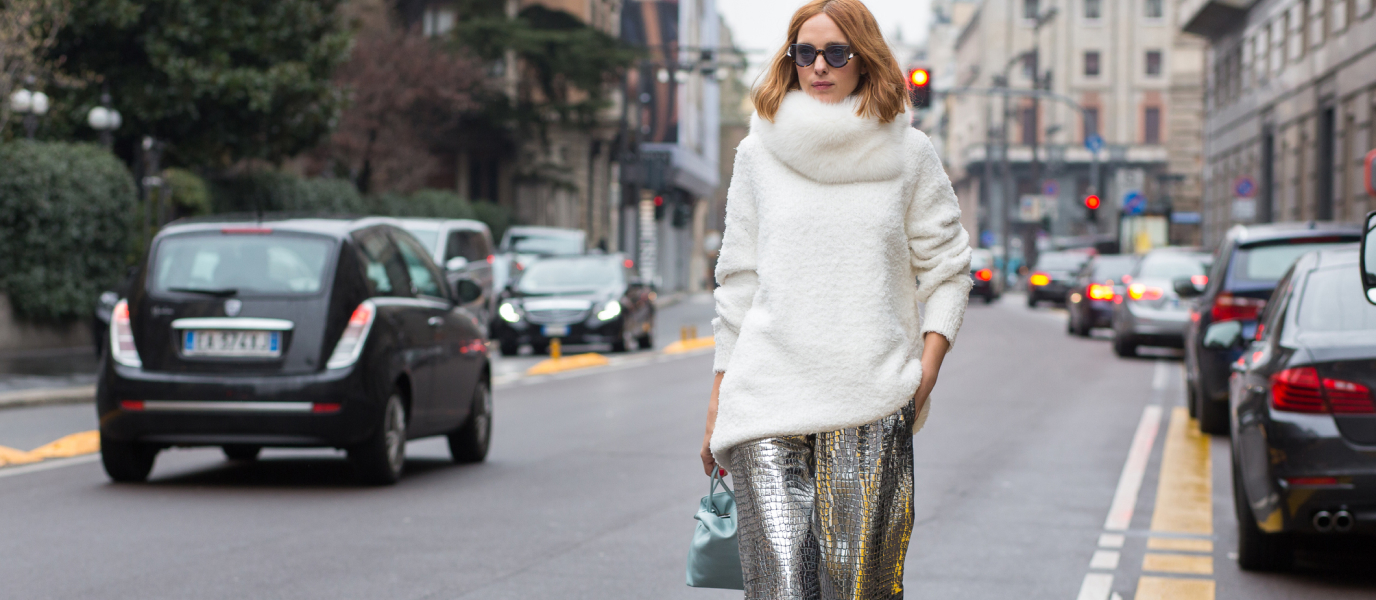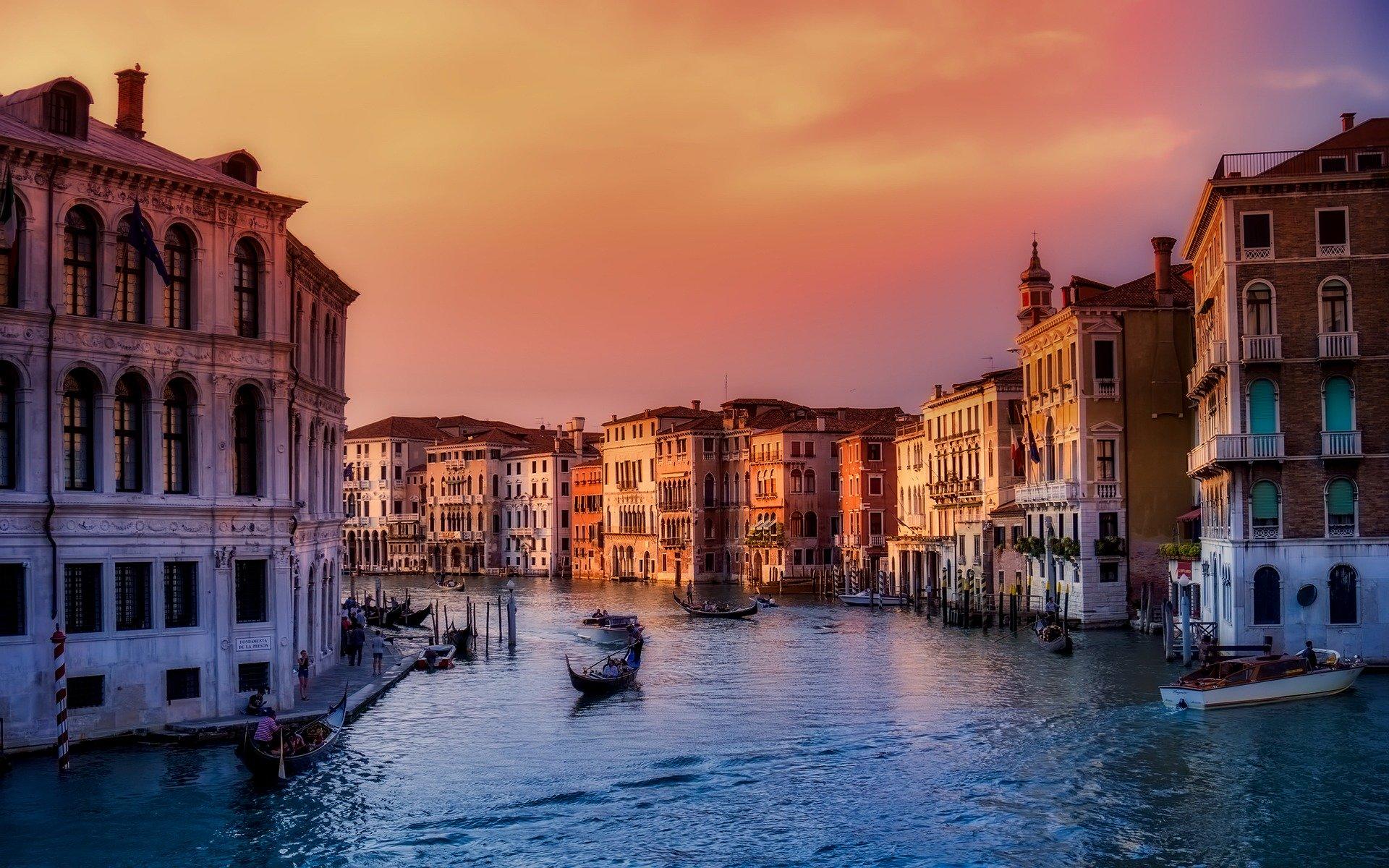If you love classical music and opera, the Teatro alla Scala is a must-see destination on your trip to Milan. It’s one of the most famous opera houses in the world, and some even claim that it’s by far the best in existence.
Built in a neoclassical style and with a rather plain façade, the Teatro alla Scala is one of Milan’s proudest assets. It opened in 1778 with an opera by Salieri (L’Europa riconosciuta) and its horseshoe-shaped main hall very quickly became a favourite among the great composers, due to its impressive acoustics. First Rossini, then Donizetti, Bellini, Verdi, Puccini, and Toscanini followed. Because singing at La Scala in Milan, for any artist, is a true honour.
Also known as La Scala, this theatre is located next to the famous Via Manzoni, one of the most chic and popular streets in Milan. You should know that at number 29 of this urban artery is the hotel where Giuseppe Verdi lived and died. Some say that the brilliant composer used to cover the street with straw so that he wouldn’t be bothered by the noise of the carts and horses on the cobblestones.
The Teatro alla Scala in Milan, a curious story
The Teatro alla Scala in Milan was built in the space formerly occupied by the church of Santa Maria alla Scala, which gave its name to the opera house. It was inaugurated as the Nuovo Regio Ducal Teatro alla Scala and, like many theatres at the time, it was also a casino. It was designed by the architects Pietro Marliani, Pietro Nosetti, and Antonio Giuseppe Fe.
The Milan theatre building was badly damaged in 1943 by the bombings during the Second World War and had to undergo extensive restoration. The theatre reopened, “as it was and where it was”, on 11 May 1946 with a concert conducted by Arturo Toscanini.
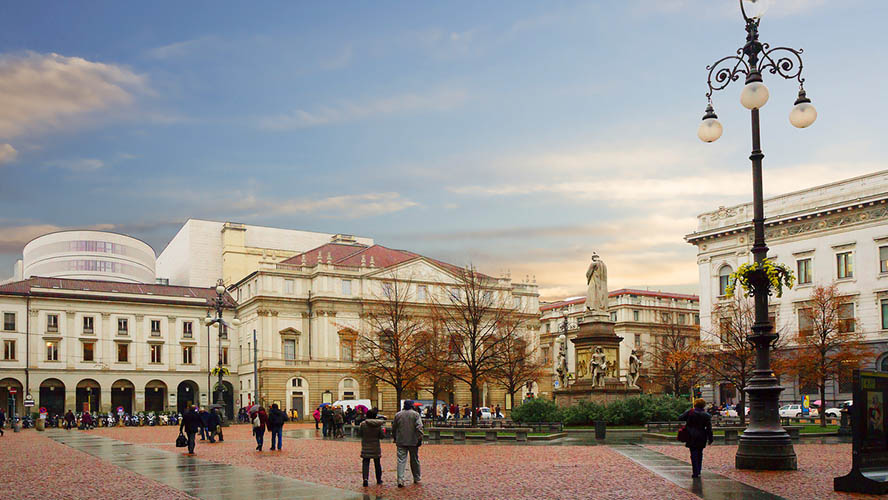
Toscanini was one of the great conductors that Milan’s Teatro alla Scala has been blessed with throughout its history, which also includes important names such as Claudio Abbado, Riccardo Muti, and Daniel Barenboim. Due to its prestige, many memorable operas have been premiered here, such as “Othello”, “Nabucco”, or “Madame Butterfly”.
The theatre was closed to the public for almost three years, from 2002 to 2004, to undergo a rejuvenation project, with Mario Botta being responsible for the architectural design. During that time, the theatre company moved to the Teatro degli Arcimboldi and the reopening was celebrated with Salieri’s opera that marked the theatre’s inauguration.
Anecdotes from La Scala, Milan’s great opera house
The history of the Teatro della Scala is full of anecdotes, but we’ll only mention three. One relates to Giuseppe Verdi, who was closely associated with the Teatro alla Scala for several years. Nevertheless, he didn’t want to perform his works there because he accused the orchestra of modifying his music.
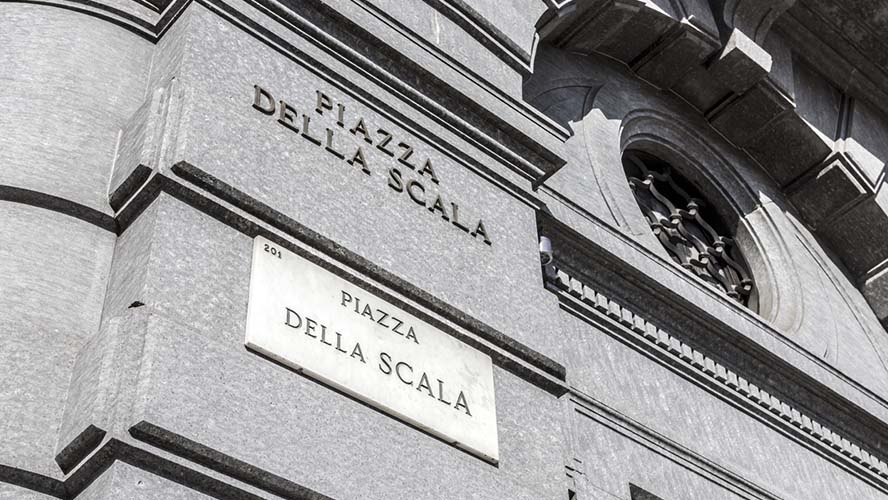
Maria Callas made her debut at La Scala on 12 April 1950 with “Aida”, but the public’s reception was so cold that the singer left the stage without finishing the performance. Fortunately, in her second performance, a few months later, she enjoyed great success and earned the nickname of “La Divina”.
The opera season at the Teatro alla Scala usually begins on 7 December, the date on which Milan’s patron saint, Saint Ambrose, is celebrated. As a curious fact, it should be noted that all operas must end before 12 midnight, so if they are long compositions, the performance must begin earlier.
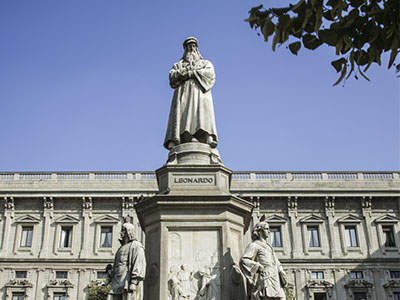
A museum in the Milan Opera House
In the same building as the Milan Opera House, you’ll find the Museo Teatrale alla Scala, which displays an extensive collection of costumes and masks that once belonged to the most famous figures in the history of Italian opera and theatre. There are also paintings, sketches, and other documents related to the opera. You can find and identify the busts of the great composers and a valuable collection of musical instruments. This is a real delight for lovers of bel canto and classical music.
An art museum in a bank
In the same square where the Teatro alla Scala is located, where you can see a statue of Leonardo da Vinci, there’s also the Gallerie d’Italia, the museum of modern Italian art that conserves and displays the collection of the Banco Intesa Sanpolo. The building, which until recently operated as a bank, still has the bank counters and the safety deposit box vault, located in the basement. This space’s unique nature makes it well worth a visit.
USEFUL INFORMATION
Address: Piazza della Scala
Telephone: 02 72 00 37 44
Website: www.teatroallascala.org
La Scala Museum website: http://www.museoscala.org/en/
How to get to the Teatro alla Scala:
- By underground. Lines M1 and M3 stop at Duomo.
- By tram. Lines 1 and 2 stop at Manzoni Scala.
Tickets for the Teatro alla Scala:
If you’re interested in getting a ticket for one of the shows at the Teatro alla Scala, you should know that they go on sale online two months in advance and by phone one month in advance. Two and a half hours before each show, 140 seats are put on sale at the box office and the queue is managed by the L’Accordo association on a first-come, first-served basis.
If you’re not lucky enough to get a ticket, you should know that there are over 30 theatres in Milan. One of them is the legendary Piccolo Teatro.
Opening hours of the Museo Teatrale alla Scala: Monday to Sunday, from 9.00 a.m. to 12.30 p.m. and from 1.30 p.m. to 5.30 p.m.




































































